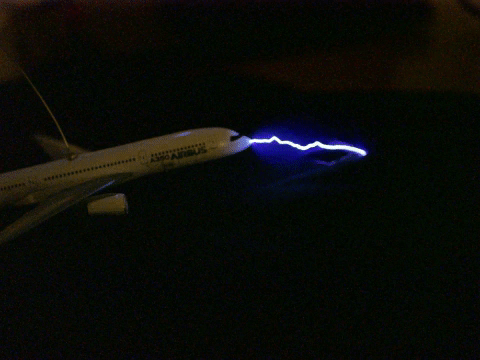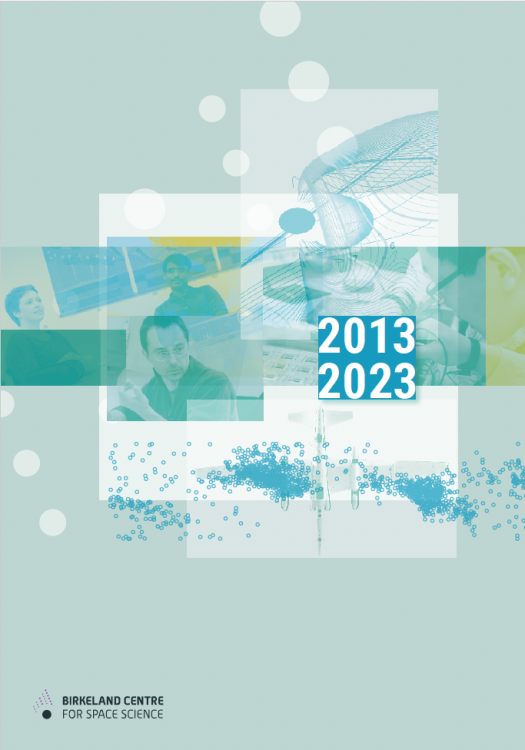Electric Aircraft Lightning Protection Initiative at BCSS
How can damage to smaller aircraft from thunderstorms and lightning be minimized? Our research focuses on identifying risk factors and finding ways to prevent damage to both the exterior surfaces of planes and to sensitive on-board electronics.
Norway leads the world in the number of electric cars in use per capita and is committed to repeating this achievement in air transportation. To prove the seriousness of the venture, in July 2018, transport minister Ketil Solvik-Olsen and Avinor CEO Dag Falk-Petersen, got into the cockpit of a two-seat fully electric aircraft and took a short flight around Oslo airport. But this wasn’t just fun and games – they were highlighting an ambitious plan to make all short-haul flights in Norway 100% electric by 2040. According to Jan Otto Reimers, a special advisor to Avinor, electric-powered flight would not only help Norway reduce greenhouse gas emission, but also make flights cheaper.
This being said, small electric aircraft can be vulnerable to severe thunderstorm conditions and especially lightning. Even large airplanes feel the effects of lightning discharges. In December 2003, a Dornier 228-200 operated by Kato Airlines was to fly a regularly scheduled flight from Røst to Bodø. There were two pilots and two passengers onboard. All of a sudden, the plane was struck by a very powerful lightning bolt, which temporarily blinded both pilots and caused damage to the plane such that the elevator control system was broken. Control of the aircraft was temporarily lost, and the plane came very close to stalling. The pilots declared an emergency, but managed to briefly regain control using pitch trim. After an unsuccessful landing attempt, the crew finally crash-landed, causing serious injury to both pilots and minor physical injuries to both passengers.

In 2017, four billion passengers traveled by air around the world. Around 2 million people are in the air at any given time. Between 180 000 and 210 000 flights are in route every day and several of them are struck by lightning. When this happens, each plane is temporarily out of service for inspection, possible repair, and operational check of all electronic systems. This means losses for the airlines and stress for many passengers daily. Accurate reports on costs related to lightning-induced damage are hard to find. The most reliable figures we have are from 1998 when lightning was shown to have cost about $2 billion annually in airline operating costs and passenger delays. But since then, air transportation has grown threefold and losses continue to grow due to the use of larger airplanes, increased use of composites and integrated avionic systems and climate-change-driven extreme weather conditions.
An average commercial aircraft is hit by lightning each 1000 flight-hours, which is roughly once a year. During a lightning strike on an aircraft, large currents pass through the hull that can damage the exterior structure and possibly the sensitive on-board electronics. The smaller the aircraft, the larger the current density passing through it – something that can be crucial for small electric airplanes. To reduce risk, aircraft have to fly around thunderstorms but this is not always practical since lightning can travel hundreds of kilometers from the storm.

According to the “Aircraft Lightning Protection Market by Application” report, the aircraft lightning protection market will grow from USD 4.1 billion in 2017 to USD 5.52 billion by 2022. The driving factors are overall economic growth, intensified air transportation, demand for more commercial aircraft, more electric aircraft and glass cockpits. Based on application, the aircraft lightning protection market is shared between lightning protection, detection and warning, and test services. However, lightning protection here implies measures taken to mitigate the actual damage to the aircraft, rather than protecting it from being struct by lightning. Our research is focused on how to make aircraft more “invisible” to thunderclouds.
A surprising fact is that about 95% of all lightning strikes to aircraft are triggered by and originate at the aircraft itself. Such triggering occurs when the aircraft approaches a thundercloud where the ambient electric field is high. The aircraft becomes polarized and the electric field near sharp extremities such as the nose, wings or aft stabilizers (fins) rapidly increases. This leads to the triggering of a lightning flash from the aircraft. There is, however, a theoretical possibility that this process can be altered.
Our research objective is to find a way to minimize the probability that the aircraft initiates a lightning flash while flying close to thunderstorm environment. Researchers at MIT came up with the idea of charging aircraft in-flight in order to protect it against lightning initiation. It may sound counter-intuitive but preliminary simulations¹ show promising effect. To validate the strategy, we have studied data gathered from Airbus test campaigns over Europe and Australia. During 15 days of flights from 2014-2016, over 90 aircraft-triggered lightnings were observed. The data consists of local electric field, current and X-ray measurements on-board the test aircraft. Using these data, we determined where on the aircraft the lightning initiates, and the amplitude of the currents associated with the lightning strikes that enter the aircraft. In addition, we observed bursts of hard X-ray radiation in association with the initiation and propagation of the lightning channels. We also studied thundercloud-related natural phenomena such as Long Gamma-Ray Glows and newly discovered positron annihilation in direct vicinity of the aircraft. Understanding these phenomena is also important for understanding how aircraft interact with the electric field of thunderclouds.
¹ Carmen Guerra-Garcia, Ngoc Cuong Nguyen, Jaime Peraire, and Manuel Martinez-Sanchez. “Charge Control Strategy for Aircraft-Triggered Lightning Strike Risk Reduction”, AIAA Journal, Vol. 56, No. 5 (2018), pp. 1988-2002. https://doi.org/10.2514/1.J056406





